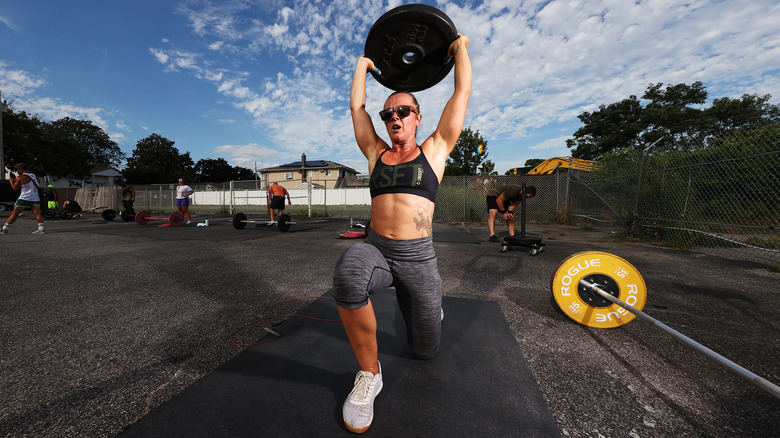Physical Therapist Dr. Stephanie Wakeman Explains The Importance Of Functional Movement - Exclusive
Physical therapist Dr. Stephanie Wakeman's passions are helping people get back to the activities they love after an injury and preventing injuries from happening at all. Functional movement is an essential part of achieving both those goals with her patients.
According to the American College of Sports Medicine's Health & Fitness Journal, functional movements mimic the motions necessary to perform the normal tasks we do throughout our day. Functional movements help build the muscles necessary to stabilize the body as it performs everyday activities. When muscles or muscle groups aren't strong enough to stabilize the body through the movements we perform every day, other muscles or muscle groups compensate by activating during those movements. Over time, the stress put on the overcompensating muscles creates pain and injury.
Teaching the body to use the correct muscle groups when performing everyday tasks is essential for recovering from injuries and preventing further injury. In an exclusive interview with Health Digest, Dr. Wakeman explained why physical therapists like herself focus so much on functional movements, which movements most of us are doing wrong, and how a physical therapist can help.
Movement as an indicator of health
Dr. Wakeman said that physical therapists pay close attention to how a person does functional movements because it serves as an indicator of their overall health.
"We know that when we lose the ability to perform tasks, like getting up from the floor, it is an indirect measure of strength and mobility, which ultimately corresponds with functionality," Dr. Wakeman explained. "When we lose the ability to perform basic tasks, we start moving less. When we move less, we slowly enter into a downward spiral of negative health events."
So, physical therapists often ask patients to do really basic things, like getting up from the floor, to see how their body moves and which muscles they use. They then identify what muscles and muscle groups their patients need to strengthen in order to perform functional movements in a safer and more efficient way and build their physical therapy program around training those muscles. Focusing on functional movements essentially re-trains people on how to safely move their bodies, which prevents chronic pain and injury by reducing stress on the muscle groups that typically overcompensate for underperforming muscle groups.
The consequences of incorrect functional movements
Unfortunately, many of us have never been shown how to perform functional movements correctly. As a result, Dr. Wakeman remarked, many of us move our bodies in ways that contribute to chronic pain and injury every single day. One movement in particular causes a lot of trouble.
"Most of us don't hinge from our hips properly, causing us to utilize the low back muscles more than necessary," Dr. Wakeman revealed. "This faulty movement pattern is the source of a lot of back pain because we end up putting a lot of undue stress on the ligaments and smaller muscles of the back, instead of utilizing the large and powerful muscles of our buttocks and legs."
This is only one example of how incorrect functional movements can contribute to soreness and injuries. Even if you're not currently dealing with an injury, a physical therapist can assess your functional movements, in person or virtually, and help you identify ways to improve how you're moving through your day and your workouts.
To download the OneStep Digital Physical Therapy app, please visit the Android or Apple app stores.



